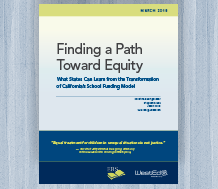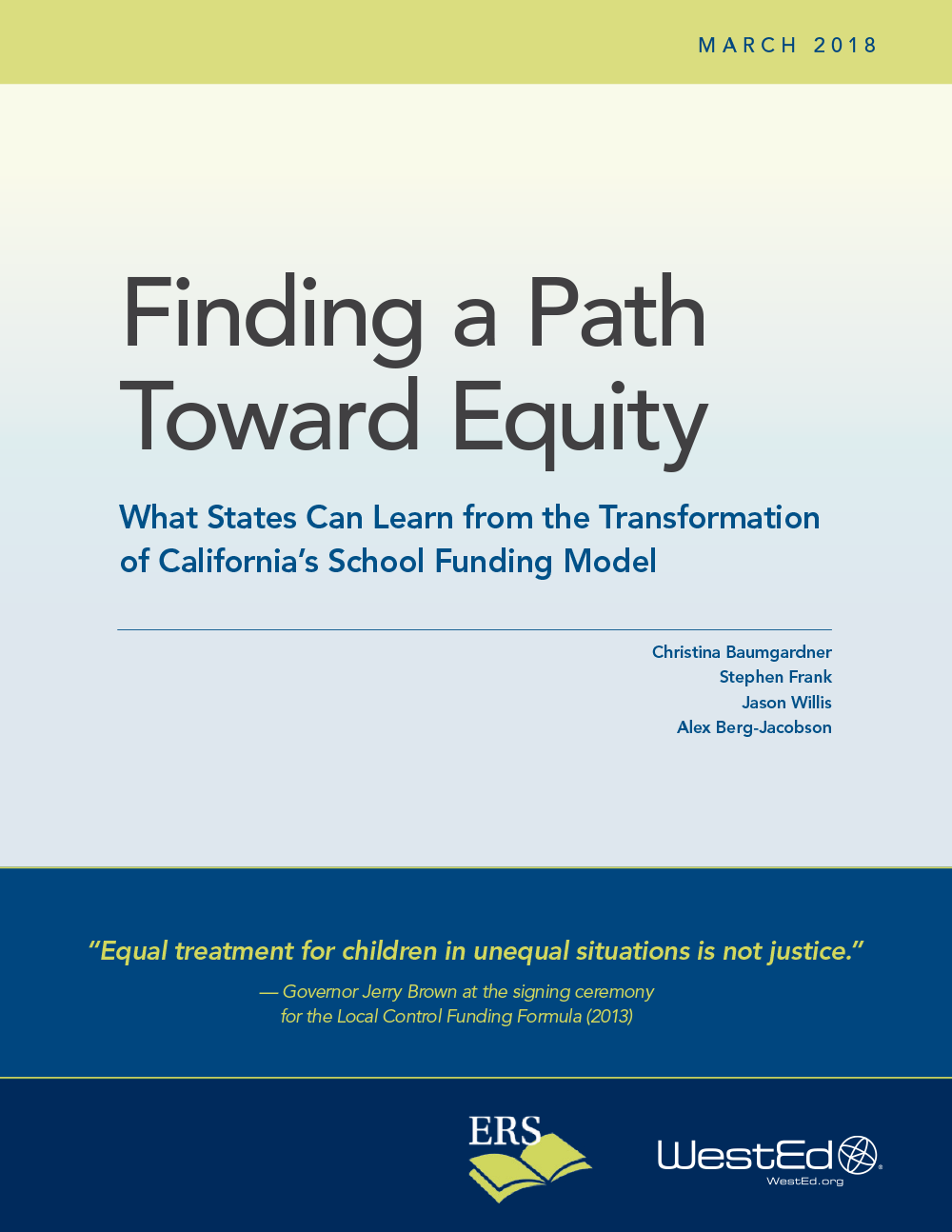Finding a Path Toward Equity: What States Can Learn from the Transformation of California’s School Funding Model
Posted on

This post was written by WestEd’s Kelsey Krausen (Senior Research Associate) and Jason Willis (Director of Strategy & Performance, Comprehensive School Assistance Center) to highlight the recently published case study, Finding a Path Toward Equity: What States Can Learn from the Transformation of California’s School Funding Model.
Many school districts in the United States continue to be plagued by inequitable and insufficient funding.* A 2015 report from The Education Trust, for instance, found that the highest-poverty districts in the country received about $1,200 less per pupil than the lowest-poverty school districts in the country.
At the same time, states are increasingly focused on developing more equitable K–12 education financing systems, including reducing funding disparities between districts and providing additional funding for high-poverty school districts.**
California is one state that has begun the process of revolutionizing its school funding system. With the passage of the Local Control Funding Formula (LCFF) in 2013, funds in California are now distributed according to the level of student need and district leaders have much more flexibility to make spending decisions. A Learning Policy Institute study on the impact of the LCFF indicates that changes to California’s funding system have led to improved academic achievement and graduation rates and narrowed achievement gaps for low-income students.
But changes to a state’s funding system can be extremely difficult and complex. To offer a close examination of the ins and outs of one state’s school finance reform process, WestEd and Education Resource Strategies recently released a case study describing how California passed, and has begun to implement, the LCFF. The report, Finding a Path Toward Equity: What States Can Learn from the Transformation of California’s School Funding Model, offers practical guidance for policymakers, administrators, educators, and advocates who want to increase flexibility, equity, and transparency in their state K–12 funding systems.
While some aspects of the LCFF story are unique to the California context, there are valuable lessons applicable to all states pursuing a more equitable and transparent K–12 funding system. In particular, the report offers a set of “Lessons for Other States” that provide information on the need for flexibility and adaptability in a state funding system. These lessons also suggest that changes to a state’s funding system can take considerable time and must continue to evolve based on needs identified during implementation.
The case study also provides important background information and context on the LCFF for a California audience. In 2018, California will elect a new governor and a new superintendent of public instruction. Both elected officials will help guide the future of the LCFF. Questions remain about how the LCFF will continue to evolve to address the concerns of stakeholders about a lack of transparency in how supplemental and concentration funds are spent and whether they are being used to meet the needs of the students for which the funds were intended. Concerns also remain about the adequacy of base funding provided under the LCFF, particularly given rising pension contributions and employee health and welfare costs. This case study offers a detailed picture of the history, context, and guiding principles of the LCFF, which may help guide efforts to address these and other outstanding issues and questions in California.
Download the new case study for free at WestEd.org/resources/path-toward-equity.
* https://www.usccr.gov/pubs/2018-01-10-Education-Inequity.pdf
** https://www.urban.org/sites/default/files/publication/90586/school_funding_brief.pdf

